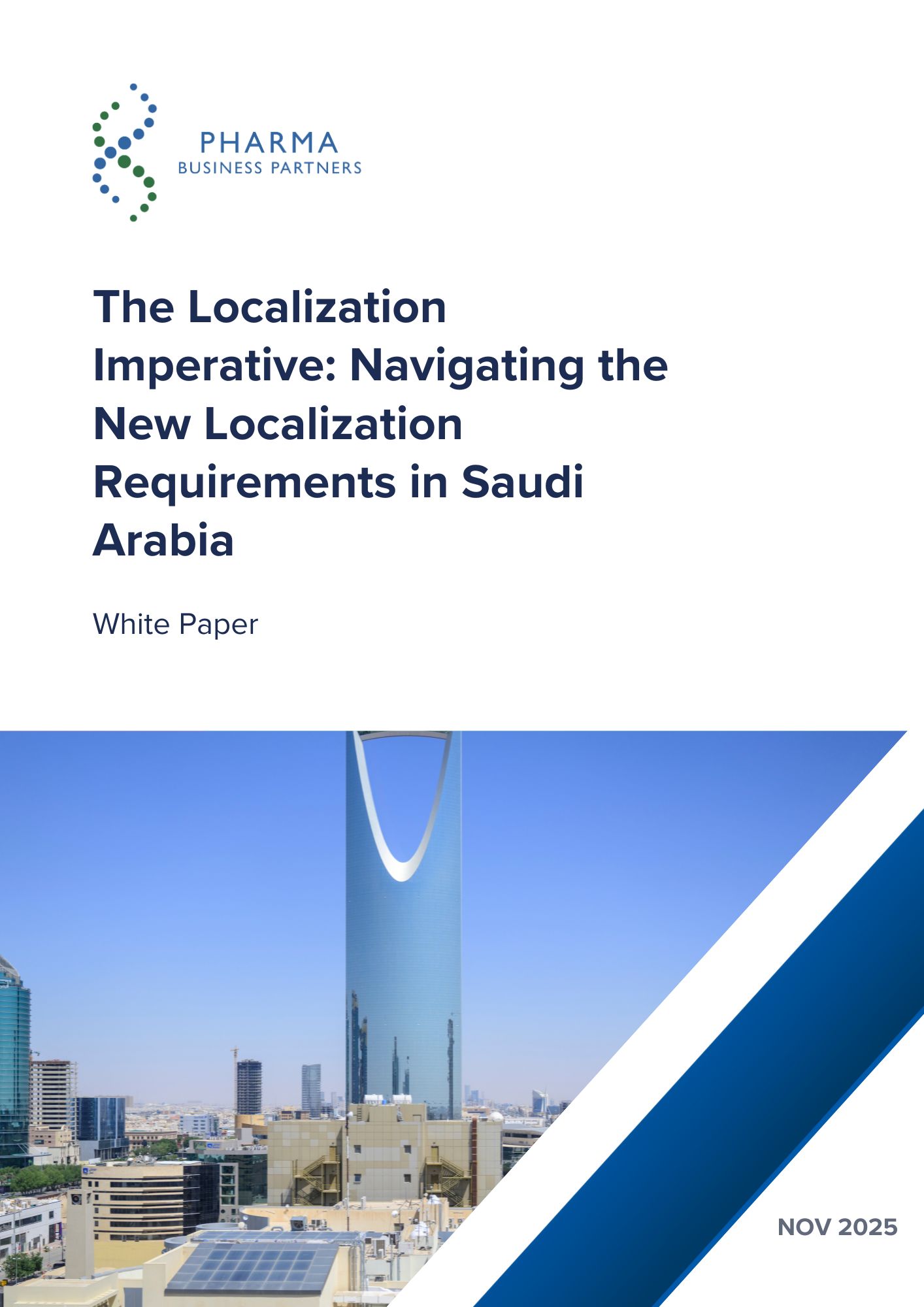White Paper
The Localization Imperative: Navigating the New Localization Requirements in Saudi Arabia
November 3, 2025

Saudi Arabia is undergoing a major transformation under Vision 2030, with localization emerging as a key driver of economic diversification and healthcare reform. Within this vision, the pharmaceutical and biopharma sectors are central to achieving national drug security and reducing reliance on imports.
As the largest pharmaceutical market in the MENA region, Saudi Arabia has reduced its import dependence from 80% in 2019 to around 70% in 2023, aiming to localize 50% of production by 2030. This shift is led by the Local Content and Government Procurement Authority (LCGPA) through two main initiatives: the Local Content framework, which rewards companies for investing locally, and the Economic Participation Program (EPP), which requires high-value foreign contractors to reinvest 35% of their imported contract value into the Saudi economy.
Localization now defines access and competitiveness in the Saudi market. Companies that proactively build local capabilities—through R&D, workforce training, and partnerships—gain procurement advantages, stronger pricing positions, and long-term trust with government institutions. Additionally, the Regional Headquarters (RHQ) Program, offering tax and tendering incentives, further reinforces Saudi Arabia’s position as a strategic hub for the life sciences industry.
This white paper explores how localization has evolved from policy to strategic imperative, outlining the frameworks, incentives, and opportunities shaping Saudi Arabia’s healthcare future—and how global biopharma companies can leverage them to achieve sustainable growth and leadership in the Kingdom.